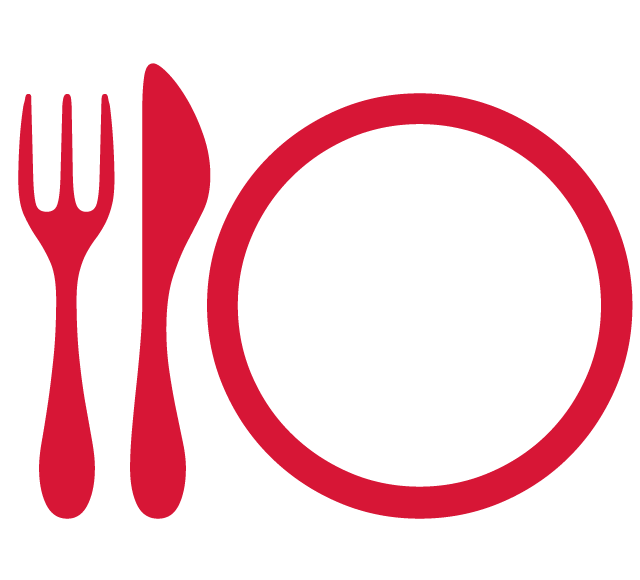
Japan’s Heirloom Vegetables
Japan's traditional vegetables, or heirloom vegetables, hold within their seeds centuries of history, culture, and meaning. Discover Japanese heirloom vegetables and where to enjoy them with official Michelin Guide partner, OMAKASE.
What is an Heirloom Vegetable?

Heirloom vegetables are those whose seeds “have been saved and passed down over time and must be open-pollinated.” (Solomon, NCSU, 2023)
What Makes Heirloom Vegetables Distinct?
Traditional vegetables, categorized as dentou yasai in Japan and heirloom varieties globally, are different from supermarket F1 vegetables, which are the first classification of hybrid cultivars. F1 vegetables dominate modern agriculture worldwide but were also first developed in Japan. While F1 cultivars are considered ideal for mass-market farming, heirloom vegetables are often more flavorful and represent an area’s cultural heritage and agricultural history.
Japan’s Heirloom Vegetables
Japan’s heirloom vegetables (dentou yasai) are recognized in clusters and may be further designated by the GI (Geographical Indication) scheme. The best known of these are Kyo-yasai, Kaga-yasai, and Shimasai, which hail from Kyoto, Ishikawa, and Okinawa respectively.
Other regions notable for their heirloom vegetables are Gunma, Shinshuu (kyushuu), Yamagata, and increasingly, Tokyo, for Edo-yasai.
Kyo-yasai

Kyoyasai were designated in 1989 as produce that had been cultivated in the region from the Meiji period or earlier. There are over 30 major Kyoyasai considered essential to Kyoto cuisine. Protection and marketing efforts began in the early 1960s, and particular cultivars have become so well recognized that they have lost public recognition as a product of Kyoto. Kyoyasai are one of the most famous indications of heirloom vegetable in Japan, thanks to Kyoto’s status as the home of kaiseki and ryotei dining, distance from the sea, and historical prevalence of vegetarian Buddhist monks in the area. Some kyoyasai have been cultivated here for 1200 years. Kyoto’s vegetables were mainly cultivated in the basins and valleys around cities, and thanks to a humid, mild climate year-round, even subtropical vegetables have adapted well.
Essential Kyo-yasai
Kamo Eggplant

Kamo-nasu or Kamo Eggplant are thought to have been first cultivated in Kyoto’s Fushimi ward. Almost perfectly round bulbs, each pomelo-sized eggplant weighs over 200g thanks to its thick meat. When cooked, these eggplants become creamy and savory, making them an indispensable ingredient in kaiseki. They are also used in making miso dengaku and frying.
Ebi-imo

Ebi-imo, literally “shrimp potato” are taro root cultivars with a long appendage and distinct banding. The root looks like a shrimp in both pattern and shape, thus the name. Ebi imo stewed in sweet soy broth with dried cod pieces forms a traditional dish called “imobo” which has been enjoyed since the Edo period.
Shogoin Turnip

The shogoin turnip is essential for making senmaizuke (thousand-slice-pickle), pickles made from turnip sliced translucent-thin and piled layer after layer in pickling solution. They are a well-preserved cultivar and seeds can even be purchased and grown internationally. Shogoin turnips are the largest breed of turnip in Japan, weighing as much as 5kg.
Kaga Yasai

There are only about 15 official Kaga yasai and 24 traditional vegetables, but they are iconic enough to feature occasionally in seasonal menus of major chain restaurants. Kaga yasai are grown in Ishikawa prefecture, the former Kingdom of Kaga, specifically around Kanazawa. This area was historically wealthy, allowing the merchant class ample leisure time to perfect many arts, such as pottery, dyeing, and wood-working. Thanks to its wealth, the area developed cuisine suitable for lavish banquets and entertaining, which contributed to the cultivation of specialized produce. Kaga yasai designated produce have been grown in this area since 1945 or earlier.
Essential Kaga-yasai
Kinjisou

This plant is native to Asia and considered a weed in other parts of Japan, though it is cultivated in the Kaga region. The leaves which are green on the surface and deep purple on the underside taper to a sharp point. When boiled, the plant releases a viscous mucous that is enjoyed as a popular texture in Japan (think natto and yamaimo). Kinjisou is often served with soy sauce and enjoyed with local sake.
Gorojima Kintoki Sweet Potato

Introduced in the late 1600s from Satsuma, these sweet potatoes are well suited to Kanazawa’s soil. They are highly praised for their attractive color and shape and have a high sugar content. Gorojima kintoki are celebrated with an annual public harvest festival in Kanazawa and have become famous enough to earn their own official Pocky flavor. Their natural texture is often starchy but moist.
Kaga Renkon

Kaga lotus root is often used in hot pots and stews, fried, braised, or grated into cakes and rice, then steamed. Texturally, Kaga renkon are higher in starch than average, giving them a doughy texture. Lotus roots range between mealy apple and starchy baked potato, making them appropriate for both thick and thin slicing. Kaga renkon are especially prized when their sugar content is low, in summer.
Shimayasai

Okinawa’s traditional vegetables are called Shimayasai, highlighting Okinawa’s importance as a disconnected island, distinct from the rest of Japan. Unlike the mainland, Okinawa’s vegetables are especially vibrant in flavor and appearance. The cultivation of shimayasai has continued since the Ryukyuu period, before Okinawa merged with Japan. Many traditional shimayasai are not even commonly associated with Japanese cuisine, such as papayas and turmeric.
Essential Shimayasai
Goya (Bittermelon)

Goya are immediately recognizable by their noduled appearance. These extremely bitter vegetables are rarely eaten raw but are an essential ingredient in Okinawan soul-food, “chanpuru” (champloo). Their bitterness comes from a high concentration of vitamins and minerals, and they are said to help with digestion.
Shima ninjin

Long, yellow, and slender, these carrots crossed into Japan from China. Post-war, Western carrots became a staple in mainland Japan, while Okinawa continued cultivating shima ninjin. These carrots are softer and sweeter than ordinary carrots, with high vitamin content and pectin levels. They are used in the traditional dish, shiri-shiri.
Nabera/Hechima

Called a loofa squash, sponge cucumber, and more, the nabera is a rare vegetable with a spongey texture and sweet, zucchini-like flavor. It is used in stir fries or simmered in miso for a traditional dish. The plant can also be used for skin and sunburn care.
Murasaki imo (purple sweet potato)

Murasaki imo have become an iconic flavor of Okinawa. Local sweets and Okinawa themed goods are inseparable from these potatoes' rustic flavor. Not to be confused with taro, which also grow on the island, purple sweet potatoes have a moist, creamy center. Their strong sweet potato flavor makes them ideal for desserts, but they are also distilled into spirits in Okinawa.
Michelin Dining with a Passion for Japanese Vegetables
JINBO MINAMI AOYAMA (ジンボ ミナミ アオヤマ) / tokyo / French
This Michelin-selected restaurant in Omotesando takes pride in offering its unique specialty: A bagna cauda that represents the bounty of each season. Chef Jinbo is not just a chef, but also a restaurant consultant who works to bring the superiority of Japan's domestically raised vegetables into the spotlight. As a culinary ambassador of Ibaraki prefecture, Chef Jinbo serves cuisine he knows guests may never have a chance to try again, thanks to the hyper-seasonality of his dishes.
- Operation hours
- Lunch: 11:30 AM - 3:00 PM
Dinner: 5:30 PM - 10:00 PM - Regular holiday
- Sundays, Mondays
- Price range
-
Lunch: USD 85.78 - USD 102.09
Dinner: USD 171.57 - USD 232.39 - Address
- 4-11-13 , Minami-Aoyama, Minato-ku, Tokyo
- Nearest station
- Omotesando Station
- Directions from station
- 8 minutes walk from Omotesando Station
- Payment methods
- Cash, Credit card
- Seats
- 24 Seats
- Awards
-
Michelin

La Paix (ラぺ) / tokyo
Situated in Nihombashi, La Paix makes use of domestic ingredients to create a Wa-French course menu that appeals to a wide number of international guests. Not only has this restaurant earned one Michelin star, but vegetarian course menus are also available with advance booking. Chef Ippei Matsumoto uses Wakayama's traditional products, including Kishu Ume and Tartary Buckwheat, in a range of exciting dishes that reflect his homeland.
- Operation hours
- Lunch: 11:30AM - 2:30PM (Last Entry Time 12:00PM)
Dinner: 6:00PM - 10:00PM(Last Entry Time 7:00PM) - Regular holiday
- Irregular Holidays
- Price range
-
Lunch: USD 120.1 - USD 171.57
Dinner: USD 154.41 - USD 231.61 - Address
- Inoue 3rd Building B1F,1-9-4, Muromachi, Nihonbashi, Chuo-ku, Tokyo
- Nearest station
- Mitsukoshi-mae Station
- Directions from station
- A few minutes walk from Mitsukoshi-mae Station
- Payment methods
- Cash, Credit card available
- Seats
- 15 Seats
- Awards
-
Michelin
 Awards
Awards
-
Z.K.5.0Posted on :03/05/2024
Daigo (醍醐) / tokyo /kaiseki
Shojin ryori (Buddhist temple cooking) is associated with Kyoto, but at Daigo, diners can enjoy contemporary shojin cuisine in Tokyo. The restaurant currently holds a Michelin star and green star. Now run by its fourth generation, Chef Yusuke Nomura continues his grandmother's culinary legacy by devoting himself to washoku and Buddhist philosophy. The use of vegetables like Kamo eggplant evoke old Japan in modern Tokyo while diners enjoy a space wrapped in nature.
- Operation hours
- Lunch: 11:30 AM - 3:30 PM (Last Entry Time 1:00 PM)
Dinner: 5:00 PM - 10:30 PM (Last Entry Time 8:00 PM) - Regular holiday
- New Year's
- Price range
-
Lunch: USD 128.82 - USD 260.89
Dinner: USD 195.67 - USD 260.89 - Address
- 2-3-1, Forest Tower 2F., Atago, Minato-ku, Tokyo
- Nearest station
- Kamiyacho Station, Onarimon Station
- Directions from station
- 5 minute walk from Kamiyacho Station
3 minute walk from Onarimon Station - Payment methods
- Credit card available
- Seats
- 100 Seats
- Awards
-
Michelin

-
Megan SF5.0Posted on :11/20/2025
-
Charles4.8Posted on :11/07/2025
-
승주5.0Posted on :06/23/2025
Jean-Georges at The Shinmonzen (ジャン-ジョルジュ アット ザ・シンモンゼン) / kyoto / French
During warmer months, diners gather at river-side seats to enjoy recipes straight from Jean-Georges' New York kitchen with the influence of Kyoto's microseasons. This Michelin selected restaurant is located in the Shinmonzen hotel, where local Kyoyasai, meat, and more are delivered daily from producers with long-time connections. Diners are welcome for breakfast, lunch, and dinner, where they can enjoy a fusion of American, French, and Japanese cuisine.
- Operation hours
- Breakfast: 7:00AM - 10:30AM (L.O. 9:30AM)
*For breakfast reservations please email: [email protected]
Lunch: 11:30AM - 4:00PM (L.O. 3:00PM)
Dinner: 5:00PM - 10:00PM (L.O. 8:30PM)*Excluding Sundays and Mondays - Regular holiday
- Tasting Menu for Dinner is not available on Sunday & Monday
- Price range
-
Lunch: USD 60.26 - USD 85.07
Dinner: USD 170.15 - USD 248.13 - Address
- 235 The Shinmonzen, Nishino-cho, Shinmonzen-dori, Higashiyama-ku, Kyoto-shi, Kyoto
- Nearest station
- Kyotokawaramachi Station, Gionshijo Station, Sanjo Station
- Directions from station
- 9 minutes walk from Kyotokawaramachi Station
8 minutes walk from Gionshijo Station
4 minutes walk from Sanjo Station - Payment methods
- Cash, Credit card available
- Seats
- 26 Seat
10 Terrace Seats - Awards
-
Michelin
-
Michael Bornstein5.0Posted on :05/29/2025
-
John Packer5.0Posted on :04/22/2025
Shigetsu (篩月) / kyoto
Shigetsu's tatami-floored dining room has the same austere beauty as the Buddhist monk's clean robes. Inside, diners will find shojin ryori served with attention to detail and heartfelt authenticity. Considered part of Buddhist ascetic practice, purity and cleansing are at the core of shojin ryori. Despite earning a Michelin green star and bib gourmand, Shigetsu at Tenryuji temple remains focused on its role in a place of worship while serving amazing dishes.
- Operation hours
- 11:00 AM - 2:00 PM (Last Order 2:00 PM)
- Regular holiday
- Irregular Holidays
- Price range
-
Lunch: USD 26.94 - USD 63.81
- Address
- 68 Sagatenryuji, Susukinobabacho, Ukyo-ku, Kyoto-shi, Kyoto
- Nearest station
- Arashiyama Station, Saga-Arashiyama Station
- Directions from station
- 5 minutes walk from Arashiyama Station
10 minutes walk from Saga-Arashiyama Station - Payment methods
- Cash, Credit card
- Seats
- 250 Seats (10 Private Rooms)
- Awards
-
Michelin


-
Rosalia Ruggiero5.0Posted on :08/20/2025
-
Alejandro4.8Posted on :04/22/2025
-
Danielle4.8Posted on :11/12/2024


